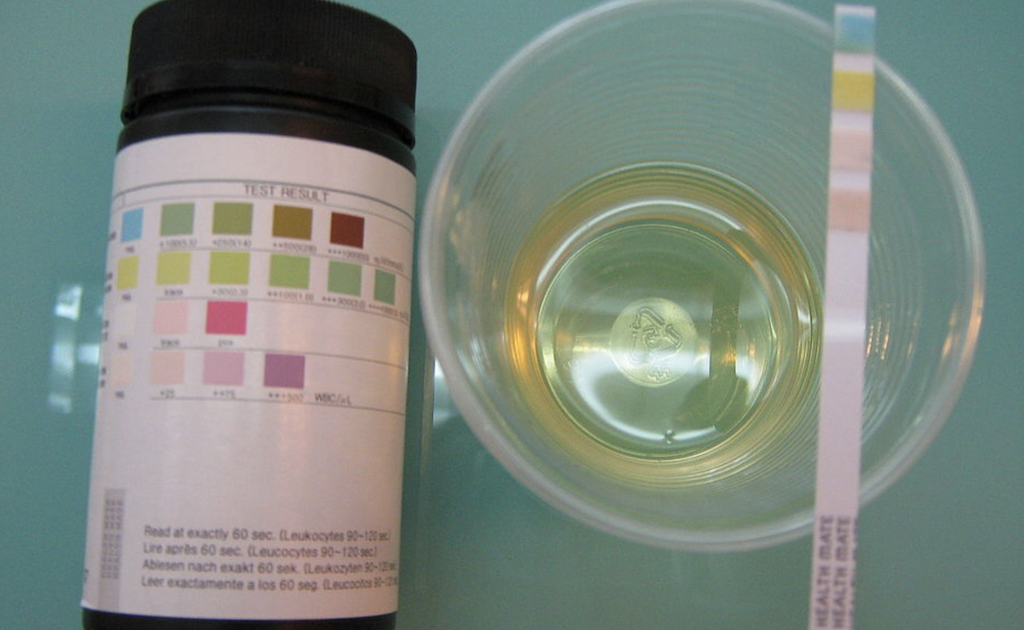Urinalysis
Last updated: January 12th, 2025

Image credit: Grook Da Oger, CC BY-SA 3.0, via Wikimedia Commons
What is Urinalysis?
Urinalysis is a urine test carried out in the course of diagnosis and treatment of a range of disorders. A urinalysis is generally ordered by a medical professional when seeking to ascertain the diagnosis of the presented symptoms.
The actual tests can vary in nature and may include physical, microscopic, and chemical tests.
Urine is produced by the kidneys who have the job of filtering the bloodstream and dumping waste through urine. This makes urine a potential treasure trove of information where doctors can look for missing substances or substances that shouldn’t be there. This can help doctors better understand what is going on and thus be able to recommend a course of action.
Why get a Urinalysis?
A urinalysis can help your doctor better understand a range of symptoms you might be experiencing as well as manage an ongoing medical condition. A urinalysis can provide key information about the condition itself as well as any undertaken treatments and how well they are working.
When should you get Urinalysis?
For the most part, a urinalysis is recommended by doctors and should be taken when advised. Typically, urinalysis can be done at the beginning of treatment and/or during the course of treatment and illness management.
Urinalysis does not require any preparation and can be collected at any time with a few exceptions. As it is not an invasive procedure, there is nothing to worry about when it comes to the procedure itself which is usually done in complete privacy.
Urinalysis procedure
Regardless of the reason why urine is being collected, procedures follow the same steps. In certain cases, the doctor might ask you to follow some extra steps to ensure the sample collected can be used for its intended purposes.
Urine is collected in a container given to you by your doctor or bought from a pharmacy. Once collected, the sample is examined in a laboratory after which the results are sent to your doctor.
For best results, the sample might need to be collected mid-stream. You may also be asked to clean the urinary opening before collecting the sample.
In most cases, you can eat and drink as usual, however, your doctor will provide you with all of the instructions depending on your particular circumstances. Urine samples are for the most part collected first thing in the morning since this makes results easier to obtain due to the high concentration. Your doctor may also use a catheter in certain situations which involve a pipe running from the urinary tract to the bladder.
Since the results are derived in a laboratory, you might need to wait until the results are made available. However, in some cases, intermediate results might be available within a matter of seconds if the doctor has the correct equipment setup.